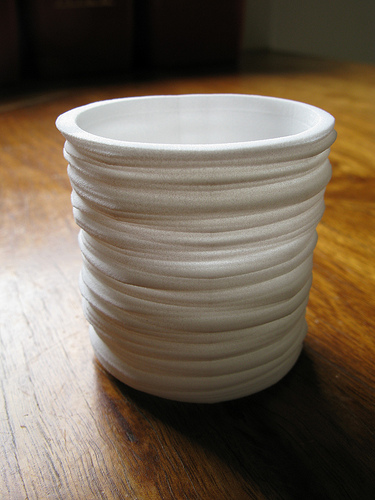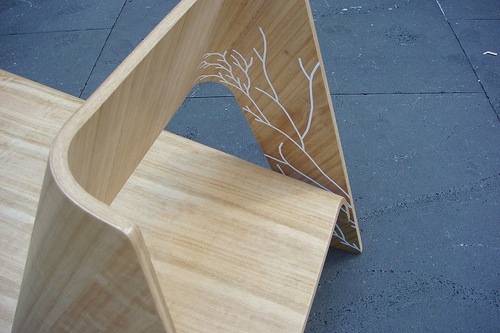In a recent article on the Craft Australia website, Mitchell Whitelaw discusses recent international developments in design and craft production incorporating distributed digital fabrication services using techniques such laser cutting and 3D printing using both Ponoko and Shapeways as examples.
“Digital fabrication services have the potential to transform craft practice, both technically and commercially. But having used them, I am also struck by how this networked production changes the maker´s experience…..mail-order making certainly feels different to a more hands-on process.”
One of Mitchell’s designs include the Measuring Cup Test Print pictured above, 3D printed by Shapeways is derived from 150 years of Sydney temperature data. Treating the form as a stack of rings, each ring represents one year’s temperature, with the months arranged radially. The higher the temperature, the further the surface is from the center. Rings are stacked from bottom to top: at the bottom of this form is data from 1859 – at the top, 2009.
This intersection of craft and networked digital fabrication is evolving into an interesting field of study considering the history of craft is tied to a direct relationship between the hand of the maker, the material and the beholder. The removal of the hand of the maker from the process is not without precedent, but now the maker may have never even seen or touched the raw materials or fully understand the tools of production. This divorce of the maker from the crafted object may even be taken a step further if it is sent direct from Shapeways to a collector, having never even passed the eyes or hands of the craftsperson.
Mitchell Whitelaw is an academic, writer and artist with interests in new media art and culture, especially generative systems and data-aesthetics. His work has appeared in numerous international journals. In 2004 his work on a-life art was published in the book Metacreation: Art and Artificial Life. His current work spans generative art and design, digital materiality, and data visualisation. He is currently an Associate Professor in the Faculty of Arts and Design at the University of Canberra, where he leads the Master of Digital Design. Check out his latest work at The Teeming Void.
Image above is the Oru chair by Canberra designer Chris Hardy, with a generative pattern that creeps over the underside and back of the chair. The chair is made from vacuum-formed laminated hardwood; the growth pattern is digitally cut vinyl.




